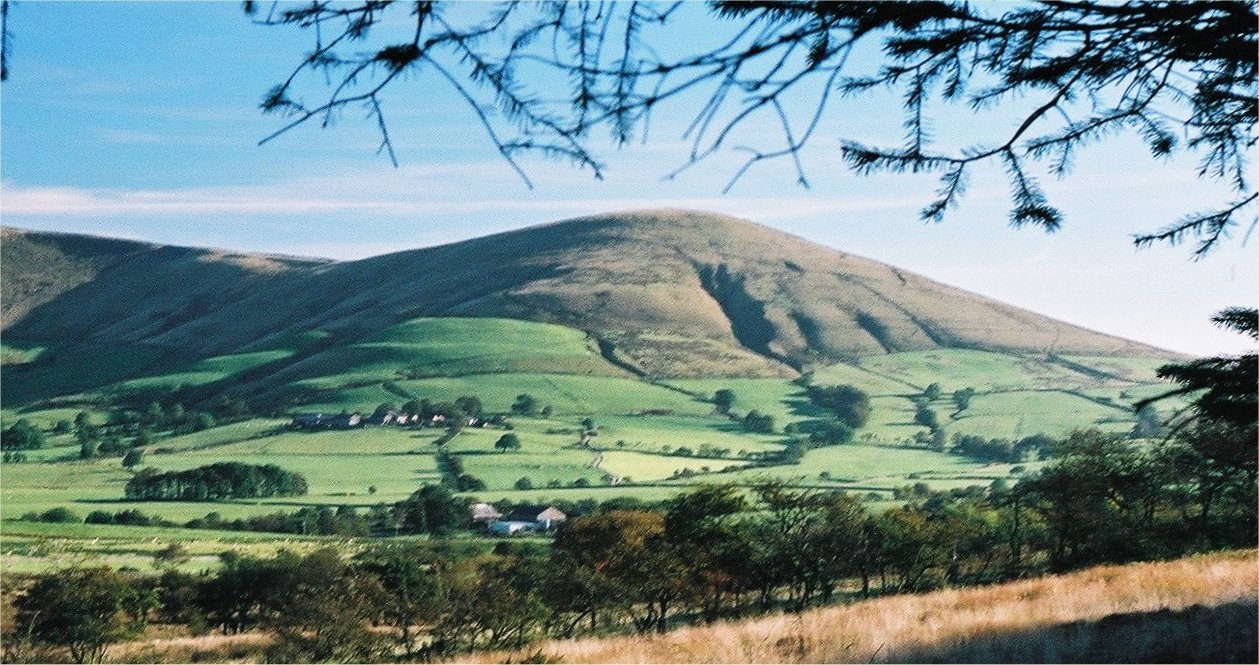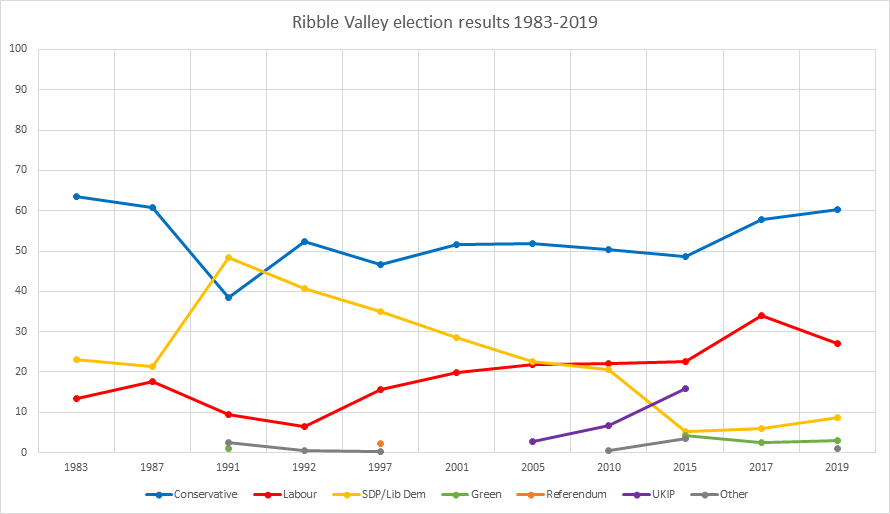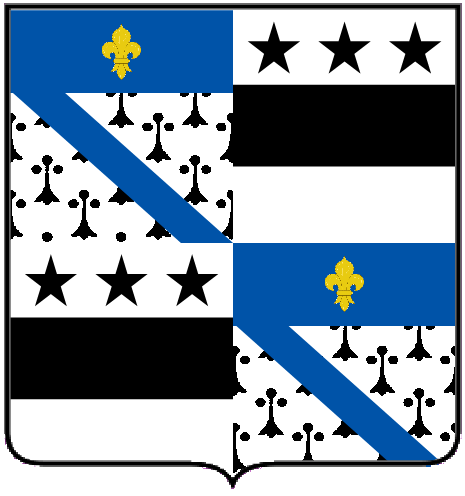|
Whitewell
Whitewell is a village within the civil parish of Bowland Forest Low and Ribble Valley borough of Lancashire, England. It is in the Forest of Bowland Area of Outstanding Natural Beauty. Historically, the village is part of the West Riding of Yorkshire, but was transferred to Lancashire for administrative purposes on 1 April 1974, under the provisions of the Local Government Act 1972. It stands above a bend in the River Hodder. The village comprises Upper and Lower Whitewell. Lower Whitewell is the site of St Michael's, a chapel of ease built in the late medieval period, certainly no later than 1400, which comes under the Lancashire parish of Whalley. The restaurant and hotel, ''The Inn at Whitewell'', is also situated in Lower Whitewell. History From the late 14th century, the Inn anciently housed the forest courts of the Forest of Bowland and provided lodgings for the Master Forester. There is evidence of Master Foresters in Bowland dating back as early as the late 12th c ... [...More Info...] [...Related Items...] OR: [Wikipedia] [Google] [Baidu] |
Bowland Forest Low
Bowland Forest Low is a civil parish in the Ribble Valley district of Lancashire, England, covering some of the Forest of Bowland. According to the 2001 census, the parish had a population of 168, falling to 160 at the 2011 Census. The parish includes the hamlets of Whitewell and Cow Ark. From northwards clockwise, it borders the civil parishes of Newton, Bashall Eaves, Aighton, Bailey and Chaigley, Bowland-with-Leagram and Bowland Forest High. Before 1974, it formed part of Bowland Rural District in the West Riding of Yorkshire. History Historic Bowland comprised a Royal Forest and a Liberty of ten manors spanning eight townships and four parishes and covered an area of almost on the historic borders of Lancashire and Yorkshire. The forest courts for the Forest of Bowland, the ''woodmote'' and ''swainmote'', originally appear to have been held at Hall Hill near Radholme Laund before moving to Whitewell sometime in the 14th century. Lower Lees, near Cow Ark, is believed ... [...More Info...] [...Related Items...] OR: [Wikipedia] [Google] [Baidu] |
Forest Of Bowland
The Forest of Bowland, also known as the Bowland Fells and formerly the Chase of Bowland, is an area of gritstone fells, deep valleys and peat moorland, mostly in north-east Lancashire, England, with a small part in North Yorkshire (however roughly half of the area falls into the area of the historic West Riding of Yorkshire). It is a western outlier of the Pennines. The Forest of Bowland was designated an Area of Outstanding Natural Beauty (AONB) in 1964. The AONB also includes a detached part known as the Forest of Pendle separated from the main part by the Ribble Valley, and anciently a royal forest with its own separate history. One of the best-known features of the area is Pendle Hill, which lies in Pendle Forest. There are more than 500 listed buildings and 18 scheduled monuments within the AONB. The Trough of Bowland is a pass connecting the valley of the Marshaw Wyre with that of Langden Brook, and dividing the upland core of Bowland into two main blocks. The hills ... [...More Info...] [...Related Items...] OR: [Wikipedia] [Google] [Baidu] |
Bowland Forest
The Forest of Bowland, also known as the Bowland Fells and formerly the Chase of Bowland, is an area of gritstone fells, deep valleys and peat moorland, mostly in north-east Lancashire, England, with a small part in North Yorkshire (however roughly half of the area falls into the area of the historic West Riding of Yorkshire). It is a western outlier of the Pennines. The Forest of Bowland was designated an Area of Outstanding Natural Beauty (AONB) in 1964. The AONB also includes a detached part known as the Forest of Pendle separated from the main part by the Ribble Valley, and anciently a royal forest with its own separate history. One of the best-known features of the area is Pendle Hill, which lies in Pendle Forest. There are more than 500 listed buildings and 18 scheduled monuments within the AONB. The Trough of Bowland is a pass connecting the valley of the Marshaw Wyre with that of Langden Brook, and dividing the upland core of Bowland into two main blocks. The h ... [...More Info...] [...Related Items...] OR: [Wikipedia] [Google] [Baidu] |
Lord Of Bowland
The Lordship of Bowland is a feudal barony associated with the Forest of Bowland in Lancashire, England. The lordship fell into disuse between 1885 and 2008, during which time it was widely believed to have lapsed; it was revived in 2008. In 1885, the estates of the Towneleys, an aristocratic family, were broken up following the death of the last male heir. These included the Forest of Bowland. In 1938, the Crown, in the form of the Duchy of Lancaster, acquired of the forest, known as the Whitewell Estate, near Clitheroe; it was generally assumed that the Lordship of Bowland had been transferred to the Crown. It was subsequently discovered that the sale of Whitewell Estate, while it included mineral, sporting and forestry rights, specifically excluded the Lordship of Bowland itself. In fact, ownership of the title had descended to an extinct Towneley family trust. Consequently, in 2008, Charles Towneley Strachey, 4th Baron O'Hagan, disposed of the Lordship by private treaty. ... [...More Info...] [...Related Items...] OR: [Wikipedia] [Google] [Baidu] |
Lordship Of Bowland
The Lordship of Bowland is a feudal barony associated with the Forest of Bowland in Lancashire, England. The lordship fell into disuse between 1885 and 2008, during which time it was widely believed to have lapsed; it was revived in 2008. In 1885, the estates of the Towneleys, an aristocratic family, were broken up following the death of the last male heir. These included the Forest of Bowland. In 1938, the Crown, in the form of the Duchy of Lancaster, acquired of the forest, known as the Whitewell Estate, near Clitheroe; it was generally assumed that the Lordship of Bowland had been transferred to the Crown. It was subsequently discovered that the sale of Whitewell Estate, while it included mineral, sporting and forestry rights, specifically excluded the Lordship of Bowland itself. In fact, ownership of the title had descended to an extinct Towneley family trust. Consequently, in 2008, Charles Towneley Strachey, 4th Baron O'Hagan, disposed of the Lordship by private treaty. ... [...More Info...] [...Related Items...] OR: [Wikipedia] [Google] [Baidu] |
River Hodder
The River Hodder is in Lancashire, England. It is a County Biological Heritage Site. It rises on White Hill and flows for approximately 23 miles to the River Ribble, of which it is the largest tributary. The Hodder drains much of the Forest of Bowland Area of Outstanding Natural Beauty and all but the last mile of its course is through this scenic area. The upper reaches of the river feed the large Stocks Reservoir, which provides water supply to the Fylde coast. After exiting the reservoir, the Hodder continues in a general southward direction. It collects many tributaries from the valleys of Bowland and, lower down, parts of the Ribble Valley. Most notable among the feeders of the Hodder are Croasdale Brook, Easington Brook, the River Dunsop, Langden Brook and the River Loud. Much of the land in the Hodder Valley further to the north is owned by the Crown as Duke of Lancaster, whilst further down, farming land on the Stonyhurst Estate is owned by Stonyhurst College a ... [...More Info...] [...Related Items...] OR: [Wikipedia] [Google] [Baidu] |
Dunsop Bridge
Dunsop Bridge is a village in the Borough of Ribble Valley, Lancashire, England, north-west of Clitheroe, south-east of Lancaster and west of Skipton. It is in the civil parish of Bowland Forest High. Historically, the village is part of the West Riding of Yorkshire, but was placed under the administration of Lancashire County Council on 1 April 1974. It is often cited as the geographic centre of Great Britain, although the exact point is at Whitendale Hanging Stones, near Brennand Farm, north of the village. In 1992, BT installed its 100,000th payphone at Dunsop Bridge and included a plaque to explain its significance. The telephone box was unveiled by Sir Ranulph Fiennes. In BT's A1141 list of unique alphabetical Telephone Exchange codes, the code for Dunsop Bridge is DSB. Geography The village is at the confluence of the River Dunsop and the River Hodder before the Hodder flows south to join the River Ribble outside Clitheroe. The bridge from which the village takes ... [...More Info...] [...Related Items...] OR: [Wikipedia] [Google] [Baidu] |
Bowbearer
In Old English law, a Bowbearer was an under-officer of the forest who looked after all manner of trespass on vert or venison, and who attached, or caused to be attached, the offenders, in the feudal Court of Attachment. The bow was a renowned English weapon, made of wood from the yew tree. Examples of the role The best-documented example of Bowbearers in England is to be found in the Forest of Bowland in north-eastern Lancashire. In the late twelfth century, Oughtred de Bolton, son of Edwin de Bolton ("Edwinus Comes de Boelton" in the ''Domesday Book'') is described as an early Bowbearer in the royal forests of Bowland and Gilsland, at the time of Henry II. However, this account is flawed as the possibility of Oughtred being the son of Edwin is fanciful and cannot be substantiated. It would have been impossible for Oughtred to have been Bowbearer of Gilsland before the 1170s when the barony was first brought into the Norman realm. Prior to that, it had formed part of the ... [...More Info...] [...Related Items...] OR: [Wikipedia] [Google] [Baidu] |
Ribble Valley
Ribble Valley is a local government district with borough status within the non-metropolitan county of Lancashire, England. The total population of the non-metropolitan district at the 2011 Census was 57,132. Its council is based in Clitheroe. Other places include Whalley, Longridge and Ribchester. The area is so called due to the River Ribble which flows in its final stages towards its estuary near Preston. The area is popular with tourists who enjoy the area's natural unspoilt beauty, much of which lies within the Forest of Bowland. The district was formed on 1 April 1974 under the Local Government Act 1972, as a merger of the municipal borough of Clitheroe, Longridge urban district, Clitheroe Rural District, part of Blackburn Rural District, part of Burnley Rural District, and part of Preston Rural District, as well as the Bowland Rural District from the West Riding of Yorkshire, hence the addition of the Red Rose of Lancaster and White Rose of York on the council's c ... [...More Info...] [...Related Items...] OR: [Wikipedia] [Google] [Baidu] |
Duchy Of Lancaster
The Duchy of Lancaster is the private estate of the Monarchy of the United Kingdom, British sovereign as Duke of Lancaster. The principal purpose of the estate is to provide a source of independent income to the sovereign. The estate consists of a portfolio of lands, properties and assets held in trust for the sovereign and is administered separately from the Crown Estate. The duchy consists of of land holdings (including rural estates and farmland), urban developments, historic buildings and some commercial properties across England and Wales, particularly in Cheshire, Staffordshire, Derbyshire, Lincolnshire, Yorkshire, Lancashire and the Liberty of the Savoy, Savoy Estate in London. The Duchy of Lancaster is one of two duchies in England, royal duchies: the other is the Duchy of Cornwall, which provides income to the Duke of Cornwall, a title which is traditionally held by the Prince of Wales. As of the financial year ending 31 March 2022, the estate was valued at £652.8 mill ... [...More Info...] [...Related Items...] OR: [Wikipedia] [Google] [Baidu] |
Ribble Valley (UK Parliament Constituency)
Ribble Valley is a constituency in Lancashire represented in the House of Commons of the UK Parliament since 1992 by Nigel Evans, a Conservative. Evans has served as a Deputy Speaker of the House of Commons and Second Deputy Chairman of Ways and Means since January 2020; he previously served as First Deputy Chairman of Ways and Means from 2010 to 2013. History The Ribble Valley constituency was created in 1983 almost wholly from the former seat of Clitheroe. Much of the eastern part of the constituency lies within the historic county boundaries of the West Riding of Yorkshire. Constituency profile The constituency enjoys scenic villages for both commuters and the retired, has slightly higher than national average income and much lower than average reliance upon social housing. As of December 2012, unemployment was significantly lower than the national average. With the exception of one year when, following a by-election, it was represented by a Liberal Democrat, the MP has been ... [...More Info...] [...Related Items...] OR: [Wikipedia] [Google] [Baidu] |
Charles Towneley Strachey, 4th Baron O'Hagan
Charles Towneley Strachey, 4th Baron O'Hagan (born 6 September 1945), is a British Conservative party politician. Early years and background O'Hagan was born a godson of Princess Elizabeth, later Queen Elizabeth II. The grandson of Maurice Towneley-O'Hagan, 3rd Baron O'Hagan, he inherited the family title at the age of 16 on his grandfather's death in 1961, his father the Hon. Major Thomas Anthony Edward Towneley Strachey having committed suicide in 1955. He was educated at Eton and New College, Oxford, and served as a Page to Queen Elizabeth II between 1959 and 1961.''Who's Who 2009'' A relative of the Strachey Baronets, he is the great-great-grandson of Edward Strachey, 1st Baron Strachie. Political career Lord O'Hagan first took his seat in the House of Lords on 5 December 1967, and gave his maiden speech whilst he was still a student. He was appointed an Independent MEP in December 1972, taking his seat on the day Britain began its EEC membership, 1 January 1973. Betwe ... [...More Info...] [...Related Items...] OR: [Wikipedia] [Google] [Baidu] |





